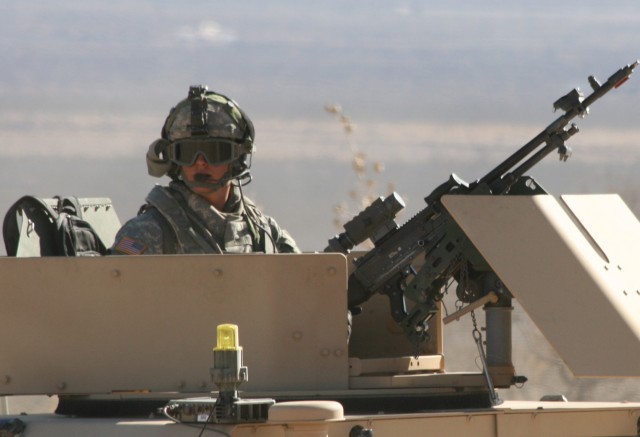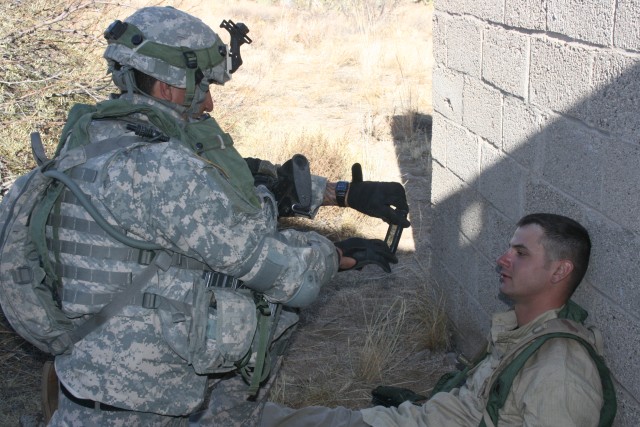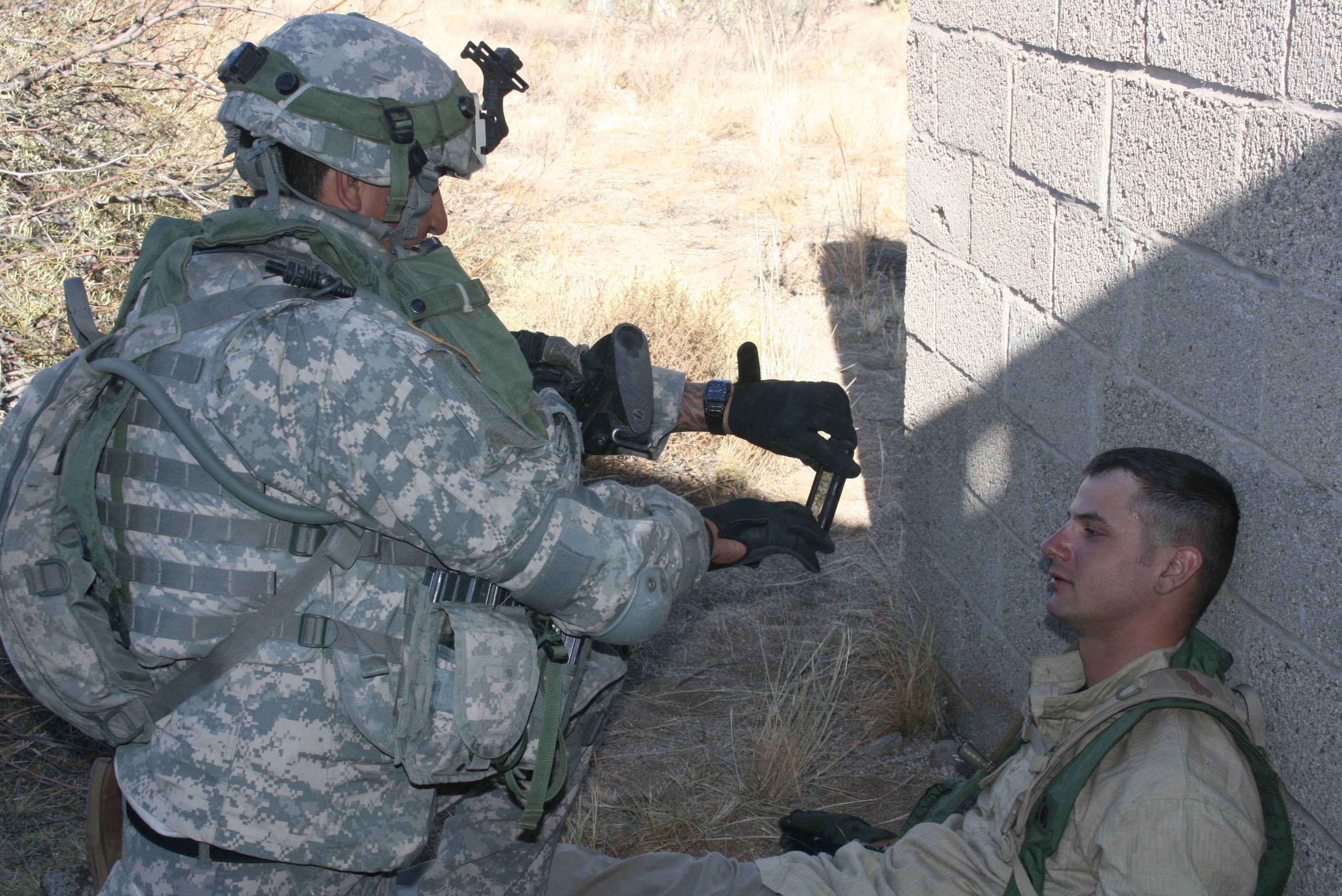WHITE SANDS MISSILE RANGE, N.M. (Dec. 13, 2010) -- Phase II of "Connecting Soldiers to Digital Applications" (CSDA) kicked off Dec. 8, with a field exercise in which Soldiers from the Army Evaluation Task Force (AETF) tested smart-phone technology.
During a limited user test in July, the Soldiers received phones with either the Android, Windows Mobile, or Apple operating system. This was the first phase of CSDA for AETF Soldiers from 1st Combined Arms Battalion (CAB), 5th Brigade, 1st Armored Division.
Capt. Andrew Hitchings, the commander for C Company, 1st CAB, said the phones were equipped with a few applications to see how the Soldiers would interact with their chain of command via text messaging and voice communications.
Phase two expanded the use of smartphones to an operational environment, said Hitchings.
"We're testing a mobile network," he said. "The phones we're using are equipped with more applications that provide direct voice communications and Soldier situational awareness, as well as additional reporting tools; so both the network and the cell phones are brand new and much more elaborate for tactical use."
In addition to familiarizing themselves with the phones and applications they used for the exercise, Soldiers said they developed their own standard operating procedures, ensuring that as a unit they were competent enough to conduct the missions and provide feedback.
"They did some additional training with each of the applications," said Hitchings. "They tested different types of headsets for voice communications and did a few rehearsals as far as learning how they would apply these new applications and these cell phones in a tactical environment."
The exercise simulated events that may occur in the theaters of operation. Soldiers were tasked to search for a mock opposing force that was responsible for the fabrication of improvised explosive devices and was hiding at a small ranch house not far from the unit's command post.
The scenario developed into a raid that called for the capture of the pursued mock insurgents. Soldiers faced insurgent activity in the mock ranch complex. The "insurgents" in the scenario were also equipped with Android-equipped phones which they actively used for communication and situational awareness purposes, said Hitchings.
"A lot of insurgencies do use what is already in place as the pre-established cell phone network in any country that we visit," he said.
Soldiers said they feel a desire to have a smart phone in hand that can aid them during combat operations.
Pvt. Harrison Henson of 1st CAB, a 2009 high school graduate, said Soldiers possess skills the Army can tap into to help develop its vision of integrating smart-phone technology in today's battlefield.
"I think we're just right off the bat - for the most part - more familiar with the concept and how to work the technology," said Henson. "What person my age doesn't text, call - whatever -- use all the smart phones. We're already pretty familiar with it. They just enhance it and create their apps to adapt to the Army's needs."
Unit officials said the training scenario lays a foundation in which Soldiers can begin to use the phones. The exercise allows Soldiers the opportunity to provide feedback to the analysts and the contractors on how to improve the phones to make them a better product for use in a tactical environment, said Hitchings.
"We're not looking for an end product today. We're not looking to completely rely upon these phones," said Hitchings "We just want to develop a scenario in which the Soldiers can try to use them, provide feedback and then refine it for future use and possible fielding."
Related Links:
'Digital rodeo' helps Army look at smart-phone apps






Social Sharing